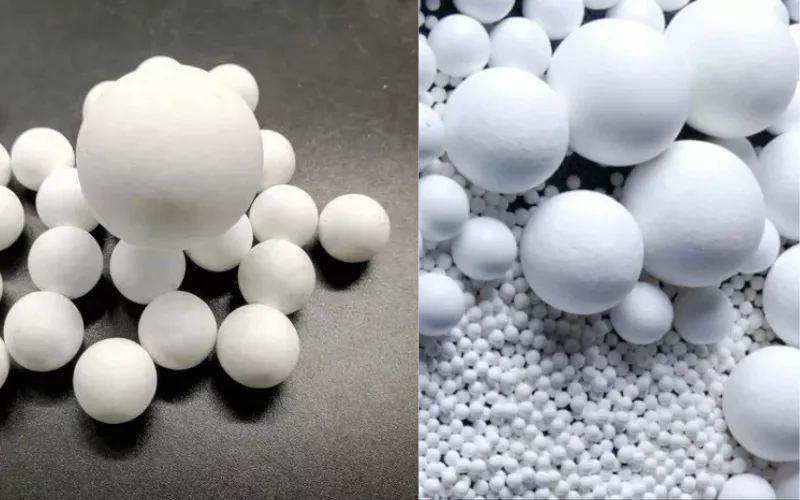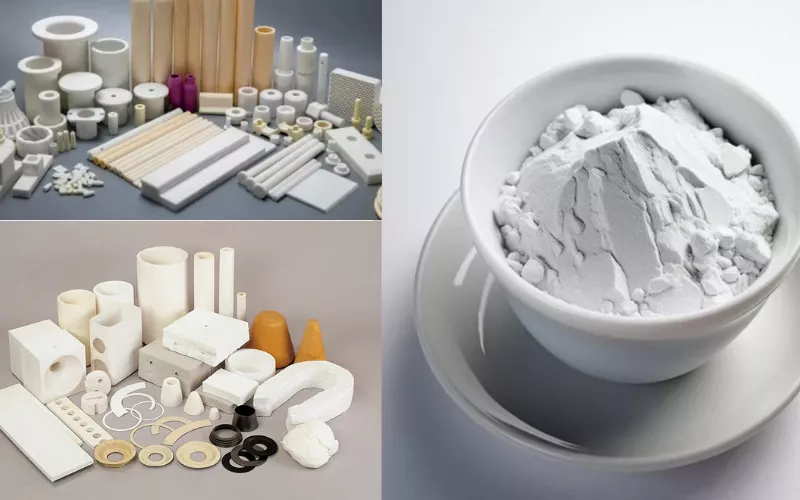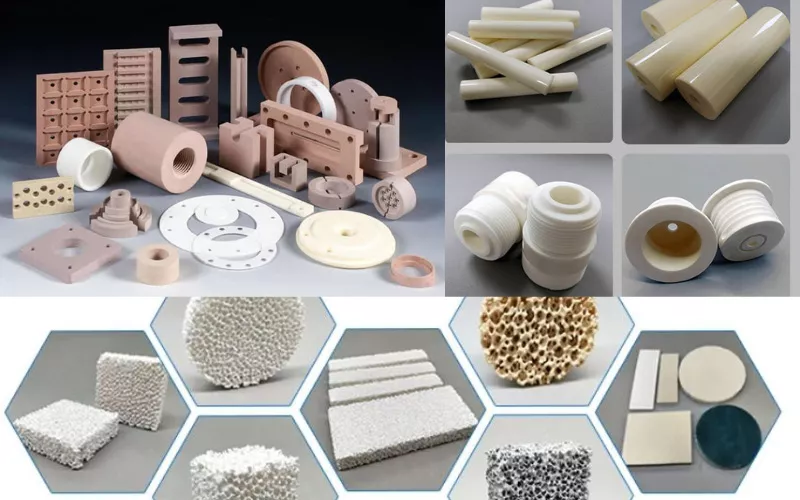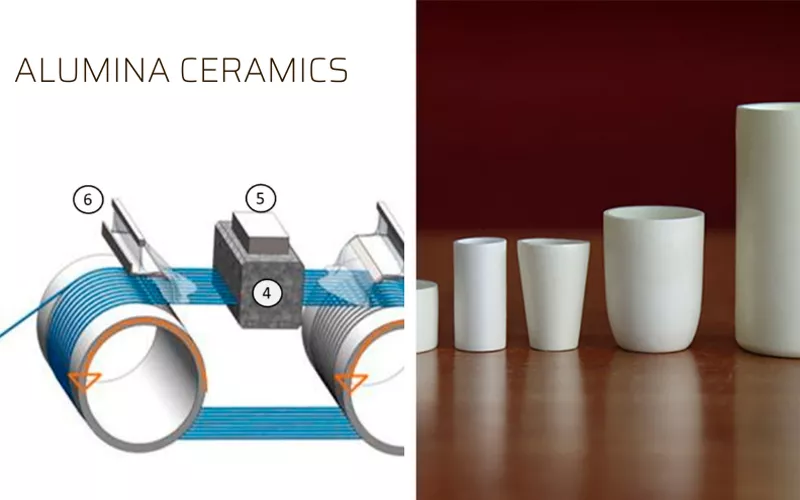Introduction
Are you curious to know about alumina and why it is so important? Aluminum oxide (alumina) can be found in different crystalline phases. It is a well-known durable material due to its strength and heat resistance. So, is alumina a ceramic? Yes, it is and its versatility makes it important for many fields.
Properties of Alumina Ceramics
Let’s move to the properties that make it special in advanced ceramics:
|
Property |
Description |
|
High Strength and Hardness |
Here’s a fact: You can trust high alumina due to its tensile strength and hardness. Just because it cannot be damaged by anything with a lower hardness. This unique quality makes it ideal for most demanding applications. |
|
Thermal Properties |
The most impressive characteristic of Alumina is that it works under extreme conditions. No one can beat Alumina in that. Alumina (Al2O3) has a good thermal conductivity of about 30 -35 W/mK. You must also be aware of its heat capacity which is 0.880 J/g-°C. This is the main reason, it can effectively handle heat transfer. It has a high melting point above 2000°C and strong mechanical strength. That makes it ideal for applications with high heat and stress loads. |
|
Electrical Properties |
Alumina (Al₂O₃) is not only known for its mechanical strength and ability to withstand high temperatures. This material is surprisingly good from the standpoint of electrical insulation as well. As an electrical insulator, it can bear extremely high currents without affecting the body’s efficiency. The dielectric constant lies in the range of 8-10 which imparts its vast application in various electronics and electrical instruments. You can be sure that alumina will give you the performance that you require. |
|
Chemical Resistance |
Advanced ceramics or fine ceramics are well-known to resist chemical attacks much more effectively than most materials. As for the materials that have been tested, alumina (Al₂O₃) seems to be among the best for extreme conditions. This is why it is used widely for the production of parts that may be used in various industries. So if you want a product that is durable and resistant to tough environments; you should go for pure alumina. |
|
Mechanical Properties |
Alumina with formula Al₂O₃ is a material with a high modulus of elasticity and good mechanical strength. Therefore, it is a hard and reliable material. However, it can affect its ability to withstand rapid changes in temperature due to its property- thermal expansion. This characteristic is referred to as thermal shock resistance. While alumina does well under such conditions, delicate handling is necessary under extreme thermal situations. |

Types and Grades of Alumina
Alumina Al₂O₃ or aluminum oxide is a versatile material that will have great potential in the commercial world. It must be unexpected for you that their different characteristics or applications depend on their grade and type. These need to be understood:
Types of Alumina:
So, the most common types of Alumina are here:
-
Smelter: As the name suggests, Aluminum metal is made using metallurgical or smelter-grade alumina. It is manufactured from aluminum hydroxide using fluid flash calciners or fluid beds.
-
Low soda: In many applications especially in the electronic and electrical industries, the presence of low soda levels in aluminum oxide is required. This is because low-soda alumina contributes to the positive and more reliable performance of certain parts and products.
-
Reactive: Reactive alumina is a unique type of advanced ceramics. It has a very good purity level and small crystal size which are suitable to use in many applications. This alumina is suitable for cases where you will require a material that has high-temperature stability, strength, chemical and wear resistance.
-
Tabular: The best part of this type is that this sintered or recrystallized α-alumina includes large and flat-shaped corundum crystals. It starts with the pressing, extrusion, or pelletization process of calcined alumina into various forms. Sintered alumina spheres are useful for a lot of applications, including use in catalyst beds.
-
Fused: Well, in this procedure alumina is produced in electric arc furnaces when a current flows between vertical carbon electrodes. The heat created then melts the aluminum oxide. After that, it produces a material with low permeability, high refractoriness, and high density. They are ideal for use in refractories and abrasives.
-
Zirconia Toughened Alumina (ZTA): By adding 10–20% of zirconium oxide to aluminum oxide, zirconia-toughened alumina is obtained. This material can be characterized by high wear resistance, strength, hardness, and its ability to withstand severe mechanical stresses ideal for use in most applications.
Grades of Alumina
Now, below are the grades of Alumina that depend on the Al2O3 content:
High purity (99% and above)
-
High-purity ceramics that usually have 99% or more alumina, are the preferred choice for harsh conditions. Furthermore, they are appropriate for use in the chemical, pharmaceutical, medical, and electronics industries.
Mid-range purity (95%-98%)
-
Mid-range ceramics are a flexible choice that provides a balance between price and functionality. They offer high wear resistance, thermal stability, and enough durability for a wide range of industrial applications. They are best to use in cutting tools, pump seals, industrial nozzles, etc.
-
Guess what? They are a cost-effective option for many applications due to their marginally cheaper price when compared to high-purity alumina.
Lower purity (85%-94%)
-
Lower-purity materials are created for use in cost-sensitive industries that require consistent performance. Other materials like silica or calcium oxide are frequently included in them. They lower the total cost while maintaining reasonable levels of durability and heat resistance.
-
Some common applications include wear-resistant linings, structural components, and basic industrial machinery parts.

Manufacturing and Processing
Don’t know how Alumina ceramics are manufactured? Now, I am going to tell you its process. Alumina is often known as aluminum oxide, as I mentioned before. It is a chemical substance composed of aluminum and oxygen molecules (Al2O3).
Alumina is typically a white powder that resembles table salt or granular sugar after being processed from bauxite.
The Bayer process:
Here comes the Bayer process which has the following four steps:
-
Initially, the bauxite is smashed, cleaned, and dried before being immersed in caustic soda at high temperatures.
-
The mixture is then filtered to eliminate the impurities, sometimes known as “red mud,” which should be disposed of carefully. The extra alumina solution is moved to precipitators, which are tall tanks.
-
After the hot solution has begun to cool, aluminum hydroxide seeds are added to the precipitator tank. Aluminum hydroxide seeds produce solid aluminum hydroxide crystals to precipitate. The aluminum hydroxide sinks to the bottom of the tank and is evacuated.
-
Then the aluminum hydroxide is cleaned of any residual caustic soda and reheated to eliminate extra water. After this procedure, alumina (aluminum oxide) comes as a fine white powder. It appears exactly like sugar used in baking but is strong enough to shatter a pane of glass.
Industrial uses of alumina
According to my research, Alumina is commonly used as an additive in plastic. The substance is also commonly used as an abrasive and is an affordable substitute for industrial diamonds. Aluminum oxide flakes cause reflecting effects in automotive paint.
The most comprehensive application of alumina is in refineries. In refineries, the aluminum oxide complex is used to change hazardous waste gasses of hydrogen sulfide into elemental sulfur. Let me tell you something: There is a long list of alumina refineries in the world.
Top Methods for Alumina Ceramics Machining
You may be thinking about how the alumina ceramics machining methods work, Right? I have researched well on this too. Here are my findings:
-
Diamond Grinding: A popular machining method for fully sintered alumina is diamond grinding. Diamond-abrasive tools are used to grind extremely hard ceramics, gradually eliminating material to make complex shapes with rigid tolerances.
-
Laser Machining: High-energy laser beams are used in laser machining, a non-contact process, to melt materials. The laser beam vaporizes the ceramic material alongside the toolpath. It produces thin sections, tiny holes, and complex patterns on alumina ceramics.
-
Electrical Discharge Machining (EDM): EDM works well with conductive alumina substances and ceramics that have been treated with a conductive coating. This method deteriorates conductive Alumina in a dielectric fluid by applying electrical discharges to produce complicated forms and small details.
-
Ultrasonic Machining (USM): This process includes degrading the alumina ceramic substance using ultrasonic vibrations and an abrasive slurry. USM is perfect for machining ceramics because it has low thermal and mechanical stress.
-
Green Machining: Green machining is a strong process that uses traditional machining equipment such as mills or lathes. It helps to shape lighter alumina ceramics in their green (unfired) condition before sintering. The result is higher material removal rates and lower machining rates than completely sintered ceramics.
-
Water Jet Cutting: This is an advanced method that uses a high-pressure stream of water along with abrasive substances. It splits alumina ceramics and complex forms. Machinists use high-pressure water pumped by a nozzle containing abrasive materials to cut intricate geometries in thick ceramics.
Alumina Plate
I’m sure you’ll agree with me on this, Advanced Ceramic Materials (ACM) provides superior Alumina Plates. It is produced from aluminum oxide (Al2O3) ceramics. At high temperatures, alumina ceramic plates have more strength and hardness. It possesses high electrical insulation, wear resistance, chemical resistance, and heat resistance.

Application of Alumina Ceramics
Want to know about the applications of advanced alumina ceramics? I’m sharing this because I truly believe it can help you:
-
Alumina ceramics are frequently used in acid-resistant pump impellers, pump bodies, acid-carrying pipe linings, and valves. This is due to their exceptional chemical stability.
-
Because of their severe hardness and wear resistance, aluminum oxide ceramics are used to make textile parts and knives.
-
Aluminum oxide is the most often used abrasive grain in the woodworking and metalworking industries.
-
Alumina ceramic materials are used to make spark plugs, which are important in many different kinds of engines.
-
Transparent alumina ceramics are used to make high-pressure sodium lamps and infrared-detecting window materials.
-
Alumina ceramics, which contain more than 95% alumina, can be used as great electrical insulators. Additionally, they have a low dielectric loss, which makes them useful for a variety of electrical appliances and electronics.
-
Alumina ceramics are also used in seal rings, medical implants, thermocouple tubes, laser tubes, and ballistic armor.
-
Other important uses of alumina ceramics are electronic substrates, electrical insulators, grinding media, and wear parts.
Difference Between Aluminium and Alumina:
Some people get confused between aluminum and alumina but they have some differences. The aluminum chemical symbol is Al. It is a chemical element with the atomic number 13. On the other hand, Alumina is a chemical compound with the formula Al2O3.
Another major difference between them is that aluminum is a good electrical conductor, whereas alumina is an electrical insulator. Furthermore, the aluminum is highly reactive with oxygen, acids, or bases. On the other side, alumina is not very reactive.
Conclusion
Alumina ceramics – did you not think they were quite impressive? Although they have such characteristics as incredible strength and heat resistance. They cover a vast range of applications and industries, it is for this very reason that they are so versatile.
